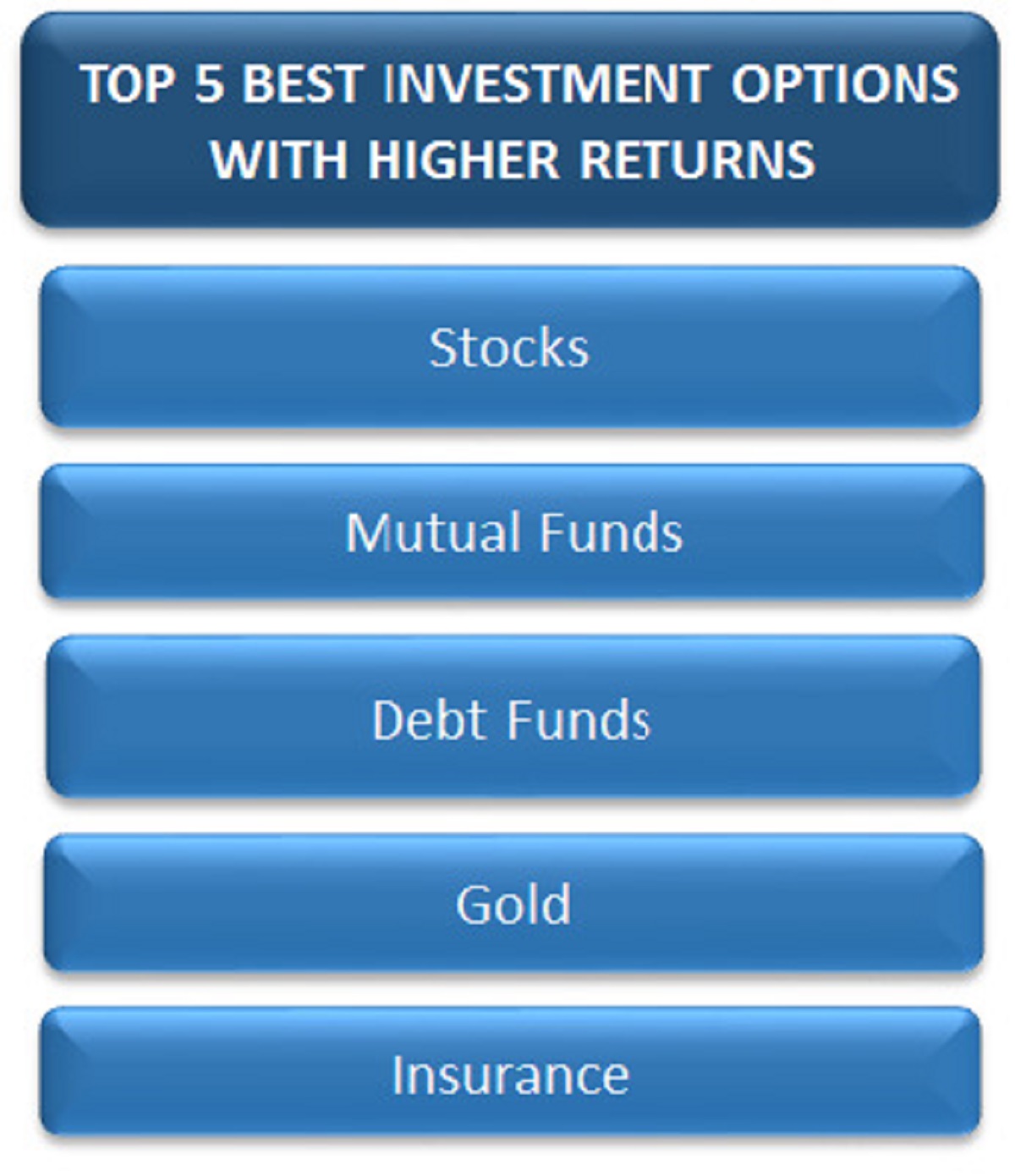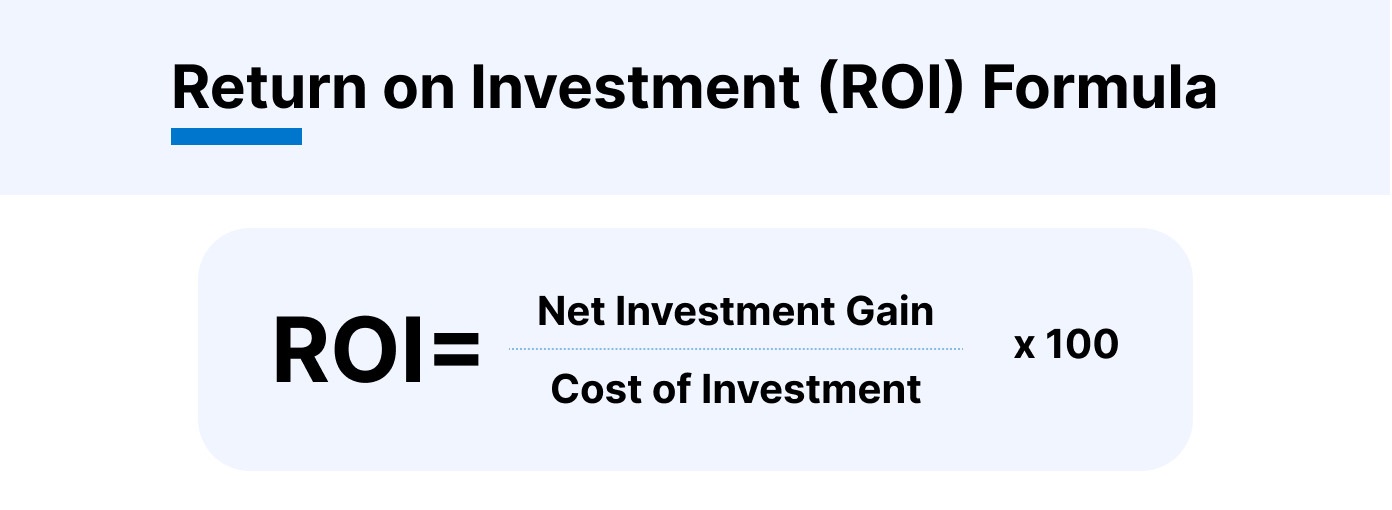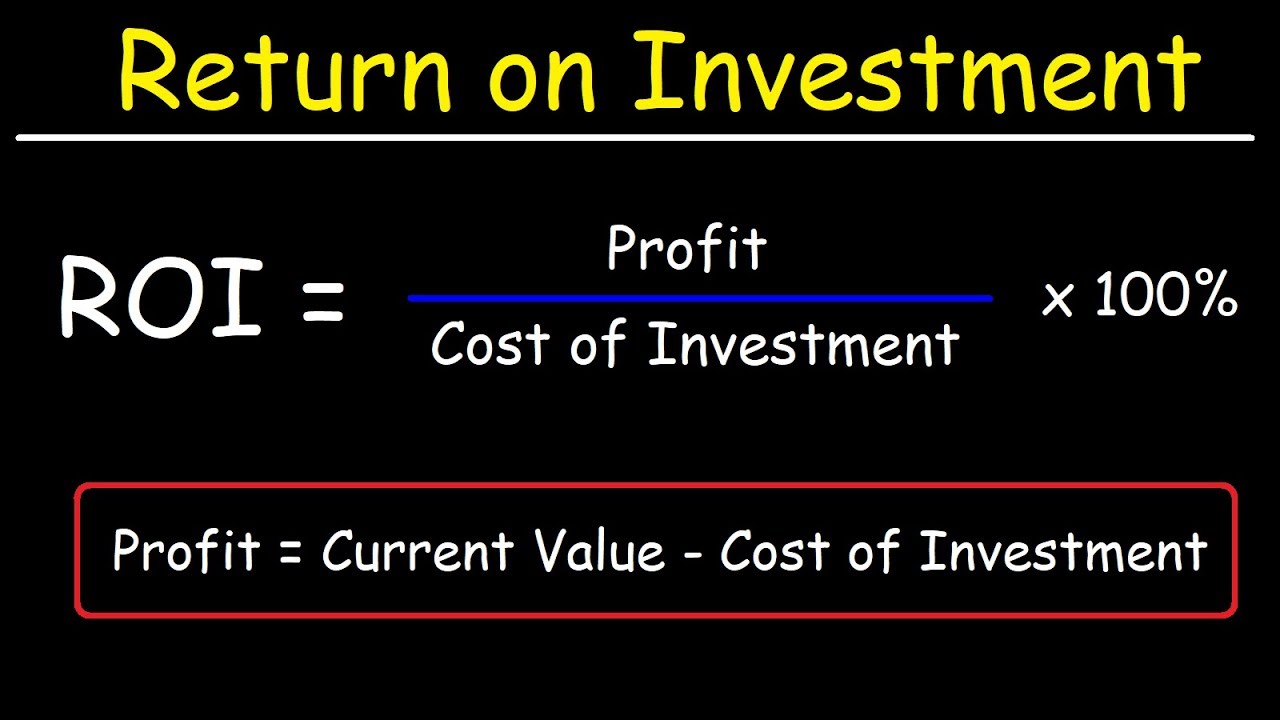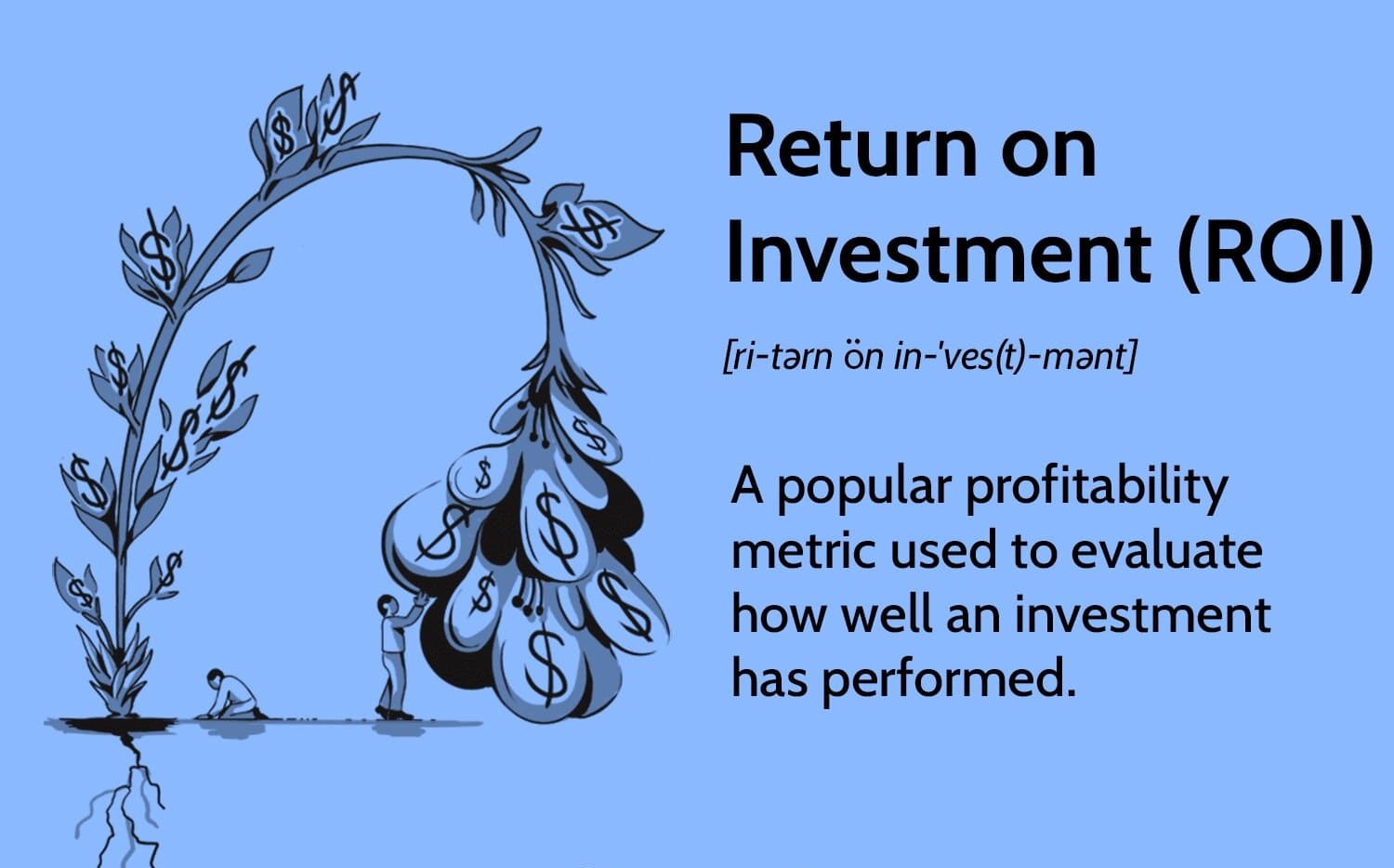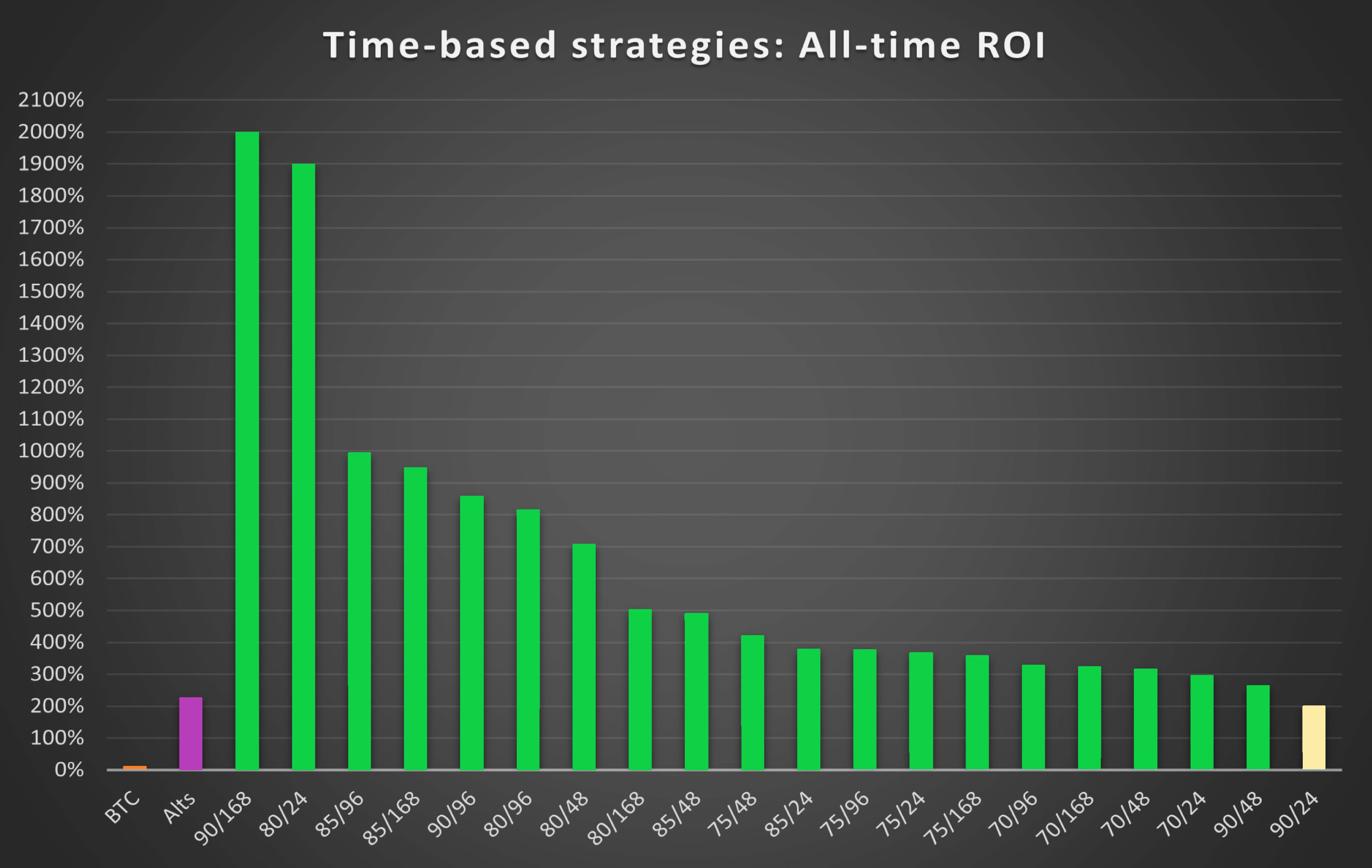Introduction
When it comes to investing, one of the most important factors to consider is the potential return on investment. After all, the primary goal of investing is to grow your wealth over time. While there are various investment options available, not all of them offer the same level of returns. Understanding which investments have the highest returns can help you make informed decisions and maximize your investment gains.
It’s important to note that investments with higher returns also tend to come with a higher level of risk. Therefore, it’s crucial to assess your risk tolerance and financial goals before diving into any investment opportunity.
In this article, we will explore some of the investment options that historically have demonstrated higher returns. From the stock market to peer-to-peer lending, from real estate to cryptocurrency, we will delve into various investment choices and highlight their potential for generating attractive returns.
While exploring these investment avenues, it’s essential to keep in mind that past performance is not indicative of future results. Additionally, the investment landscape is constantly evolving, so it’s crucial to stay informed and seek professional advice when making investment decisions.
Now, let’s embark on this journey to discover the investments with the highest potential returns.
Stock Market
The stock market is a popular investment avenue that offers the potential for high returns. When you invest in stocks, you are essentially buying shares of ownership in a company. As the company grows and becomes more profitable, the value of your shares may increase, allowing you to earn a return on your investment.
The stock market has historically provided higher returns compared to other investment options over the long term. However, it’s crucial to note that investing in individual stocks can be volatile and risky. Stock prices can fluctuate based on various factors, including market conditions, company performance, and investor sentiment. Therefore, it’s often recommended to diversify your stock portfolio by investing in a mix of different companies and sectors.
An alternative to direct stock market investment is investing in mutual funds or exchange-traded funds (ETFs). These funds pool money from multiple investors and use it to invest in a diversified portfolio of stocks. This approach reduces risk by spreading investments across multiple companies, providing exposure to various sectors and industries.
Successful stock market investing requires research, analysis, and a long-term perspective. It’s essential to stay updated on financial news, company earnings reports, and market trends to make informed investment decisions. Additionally, understanding your risk tolerance and having a well-defined investment strategy can help mitigate potential losses and maximize returns.
While the stock market can offer substantial returns over time, it’s important to remember that investing in stocks inherently carries risks. Market downturns and economic uncertainties can result in temporary losses. Therefore, it’s crucial to assess your risk tolerance and invest with a long-term perspective.
Real Estate
Real estate is another investment option that has the potential to provide high returns. Investing in real estate involves buying properties, such as residential homes, commercial buildings, or land, with the aim of generating income through rental payments or capital appreciation.
One of the main advantages of investing in real estate is that it offers the potential for both income and appreciation. Rental income can provide a steady cash flow, while the value of the property may increase over time, allowing for capital gains when sold.
While real estate has the potential for high returns, it’s important to consider various factors before diving into this investment. Location plays a significant role in the property’s value and potential for growth. Investing in properties in sought-after areas with strong economic growth and high demand can lead to substantial returns.
Real estate investing also requires careful due diligence. It’s important to thoroughly research the market, analyze property values, and consider factors such as property condition, maintenance costs, and potential risks. Additionally, proper financing and a well-structured investment plan are crucial for success in real estate investing.
Investing in real estate can be done through direct ownership of properties or indirectly through real estate investment trusts (REITs) or real estate crowdfunding platforms. REITs allow investors to buy shares in a professionally managed portfolio of properties, providing an opportunity to invest in real estate without the need for direct property ownership. Real estate crowdfunding platforms pool funds from multiple investors to invest in real estate projects, offering a more accessible entry point for those with limited capital.
While real estate can offer attractive returns, it’s important to note that it is a relatively illiquid investment. Selling a property may take time, and market conditions can affect the selling price. Additionally, real estate investments require ongoing management and maintenance, which can incur additional costs.
Overall, real estate can be a lucrative investment option for those willing to research, evaluate risks, and actively manage their properties. It offers the potential for regular income, long-term appreciation, and diversification in an investment portfolio.
Peer-to-Peer Lending
Peer-to-peer lending, also known as P2P lending, has emerged as a popular alternative investment option with the potential for high returns. P2P lending platforms connect borrowers directly with lenders, cutting out the traditional intermediary banks. As a lender, you can invest your money by providing loans to individuals or small businesses in exchange for interest payments.
P2P lending offers several advantages for investors. Firstly, it provides the opportunity to earn higher interest rates compared to traditional savings accounts or bonds. The interest rates are often determined by the borrower’s creditworthiness and the perceived risk of the loan. As an investor, you have the flexibility to choose the loans that align with your risk tolerance and desired returns.
Another advantage of P2P lending is diversification. By investing in multiple loans across various borrowers, sectors, and loan types, you can spread your risk and minimize potential losses. Many P2P lending platforms also offer tools and data to help investors evaluate borrowers’ creditworthiness and make informed investment decisions.
However, it’s important to note that P2P lending is not risk-free. There is always a possibility of default, where borrowers fail to repay their loans. Therefore, it’s essential to assess the platform’s risk management practices, diversify your investment, and allocate a portion of your portfolio towards P2P lending.
P2P lending has gained popularity due to its accessibility and ease of use. Most platforms have user-friendly interfaces, allowing investors to easily browse and invest in loans. Additionally, investing in P2P lending can provide passive income, as interest payments are typically received monthly or quarterly.
Before investing in P2P lending, it’s important to thoroughly research and understand the platform’s terms, fees, and regulations. Consider factors such as loan underwriting standards, loan types, borrower profiles, and the platform’s track record. It’s also advisable to start with a small investment and gradually increase your exposure as you become more comfortable and experienced in P2P lending.
In summary, P2P lending offers the potential for attractive returns through lending funds directly to borrowers. It allows investors to diversify their portfolios, earn higher interest rates, and generate passive income. However, it’s crucial to carefully assess risks, diversify investments, and choose reputable lending platforms for successful P2P lending investment.
Dividend-Paying Stocks
Dividend-paying stocks are another investment option that can provide attractive returns for investors. When you invest in dividend-paying stocks, you become a shareholder in a company that distributes a portion of its profits as dividends to its shareholders.
Dividends are typically paid quarterly or annually and can provide a steady stream of income for investors. Companies that consistently increase their dividend payouts over time are especially sought after by income-seeking investors.
Investing in dividend-paying stocks offers several benefits. Firstly, it provides the potential for both capital appreciation and regular income. The dividend payments can supplement your investment gains, providing a consistent cash flow regardless of the stock’s price movements.
Furthermore, dividend-paying stocks can offer a level of stability and resilience during market downturns. Companies that consistently pay dividends are often well-established, profitable, and have a solid track record. As a result, their stock prices may be more resistant to extreme volatility compared to growth stocks that do not pay dividends.
When considering dividend-paying stocks, it’s important to evaluate the company’s dividend history, payout ratio, and financial stability. A company with a long history of consistently increasing dividends and a healthy balance sheet is often preferred by investors seeking reliable income.
However, it’s important to note that investing in dividend-paying stocks is not without risks. Dividends are not guaranteed, and companies may reduce or eliminate dividend payments if their financial situation deteriorates. Therefore, researching and selecting companies with a strong dividend track record and stable earnings is crucial for successful dividend investing.
Diversification is also important when investing in dividend-paying stocks. Allocating your investments across different sectors and industries can help mitigate risks and reduce the impact of any individual company-specific issues.
Finally, it’s important for investors to assess their overall investment goals and risk tolerance. Dividend-paying stocks are often favored by income-oriented investors looking for a regular income stream. However, investors seeking higher capital appreciation may choose to invest in growth stocks that reinvest profits back into the business rather than distributing dividends.
In summary, dividend-paying stocks can provide investors with the potential for regular income and capital appreciation. However, it’s important to research and diversify investments to mitigate risks and choose companies with a strong dividend track record. Keep in mind that investing in individual stocks comes with risks, and careful consideration of your financial goals and risk tolerance is important.
Mutual Funds
Mutual funds are investment vehicles that pool money from multiple investors to invest in a diversified portfolio of stocks, bonds, or other securities. They are managed by professional fund managers who make investment decisions on behalf of the fund’s investors.
Investing in mutual funds offers several benefits. Firstly, mutual funds provide instant diversification, allowing investors to access a wide range of securities across different sectors and asset classes. This diversification helps spread the investment risk and potentially improves returns.
Mutual funds also offer professional management, as experienced fund managers analyze and make investment decisions based on their expertise and market research. This can be especially beneficial for investors who do not have the time or expertise to manage their own investment portfolios.
Another advantage of mutual funds is liquidity. Most mutual funds allow investors to buy or sell shares on any business day at the fund’s net asset value (NAV). This makes it easier for investors to enter or exit their positions compared to certain investments like real estate or private equity.
Mutual funds come in different types, including equity funds, bond funds, balanced funds, index funds, and sector-specific funds, among others. Each type of fund has its own investment objective and risk profile, allowing investors to choose the funds that align with their individual investment goals.
When considering investing in mutual funds, it’s important to research various factors such as the fund’s historical performance, expense ratio, management fees, and the fund manager’s track record. Investors should also consider their own risk tolerance, investment horizon, and financial goals before selecting a mutual fund(s) for their portfolio.
It’s worth noting that mutual funds are subject to market risks and the performance of the underlying securities. Investors should carefully review the fund’s prospectus and seek professional advice if needed.
Furthermore, diversification does not guarantee profits or protect against losses in a declining market. It’s important to regularly monitor your mutual fund investments and make adjustments as needed based on your financial objectives and market conditions.
In summary, mutual funds offer investors diversification, professional management, and liquidity. They provide access to a wide range of investment opportunities, allowing investors to build a well-rounded and diversified investment portfolio. However, it’s essential to conduct thorough research, assess risks, and choose funds that align with your investment goals and risk tolerance.
Exchange-Traded Funds (ETFs)
Exchange-Traded Funds (ETFs) are investment vehicles that trade on stock exchanges, similar to individual stocks, and aim to replicate the performance of a specific index, sector, commodity, or asset class. ETFs offer investors a convenient and cost-effective way to gain exposure to a diversified portfolio of securities.
Investing in ETFs provides several advantages. Firstly, ETFs offer instant diversification, as they typically hold a basket of securities that represent a specific market index. This diversification helps spread the investment risk and potentially reduces fluctuations caused by individual stock performance.
Another benefit of ETFs is their transparent and flexible structure. The underlying holdings of an ETF are disclosed daily, allowing investors to know exactly which securities they are invested in. Additionally, ETFs can be bought and sold throughout the trading day, providing liquidity and the ability to react quickly to market conditions.
ETFs also offer cost-effective investment options compared to mutual funds. The expense ratios of ETFs are generally lower, as they tend to have passive investment strategies that aim to replicate the performance of an index, rather than active management by fund managers.
Furthermore, ETFs provide investors with a wide range of investment choices. They cover various asset classes, including equities, bonds, commodities, and alternative investments. Moreover, there are ETFs that focus on specific sectors or themes, allowing investors to align their investments with their interests and beliefs.
When considering investing in ETFs, it’s important to research and understand the specific index or sector the ETF aims to replicate. Investors should review the ETF’s historical performance, expense ratio, trading volume, and the liquidity of its underlying holdings.
Additionally, investors should assess their risk tolerance, investment horizon, and diversification needs when selecting ETFs for their portfolio. It’s also worth noting that while ETFs provide diversification, they are still subject to market risks and the performance of the underlying securities.
Lastly, it’s important to consider the potential tax implications of investing in ETFs, such as capital gains taxes and dividend taxes. Understanding the tax treatment of ETFs in your specific jurisdiction can help optimize your investment strategy.
In summary, ETFs offer investors diversification, transparency, flexibility, and cost-effectiveness. They provide a convenient way to gain exposure to various asset classes, sectors, and investment themes. However, investors should conduct thorough research, understand the specific ETF’s objectives and underlying holdings, and consider their risk tolerance and investment goals before investing in ETFs.
Bonds
Bonds are fixed-income securities that represent loans made by investors to governments, municipalities, corporations, or other entities. When you invest in bonds, you are essentially lending money to the issuer in exchange for regular interest payments and the return of the principal amount at maturity.
Investing in bonds offers several advantages. Firstly, bonds are generally considered lower risk compared to other investment options. They are often backed by the issuer’s ability to repay the debt and may have credit ratings provided by independent agencies, indicating the issuer’s creditworthiness.
Bonds also provide a predictable stream of income through regular interest payments, usually paid semi-annually or annually. This can be particularly attractive for income-oriented investors who seek a reliable and consistent cash flow.
Moreover, bonds offer different types and durations, catering to a range of investor preferences. For example, government bonds are considered safer due to their backing by national governments, while corporate bonds offer potentially higher yields but come with higher risk. Investors can choose between short-term, medium-term, or long-term bonds based on their investment horizon and income needs.
One feature of bonds is that their prices are inversely related to interest rate changes. When interest rates rise, bond prices tend to fall, and vice versa. This means that investors may face price fluctuations if they sell their bonds before maturity. However, holding bonds until maturity ensures the return of the principal amount, regardless of market fluctuations.
It’s important to note that bond investing requires careful consideration of various factors. Credit risk, which refers to the probability of the issuer defaulting on payments, is a crucial consideration. Prioritizing bonds with higher credit ratings can mitigate this risk. Additionally, understanding the bond’s terms, such as coupon rate, maturity date, and call features, is vital for making informed investment decisions.
Diversification is also key when investing in bonds. Allocating investments across different issuers, industries, and geographies can spread risk and potentially enhance returns. Bond funds, such as bond mutual funds or ETFs, offer a convenient way to diversify bond investments by pooling funds from multiple investors and investing in a portfolio of bonds.
In summary, bonds offer investors a lower-risk investment option with predictable income streams. They provide a range of choices in terms of issuer, duration, and yield. However, investors should consider factors such as credit risk, interest rate fluctuations, and diversification when investing in bonds.
Cryptocurrency
Cryptocurrency has emerged as a unique and potentially high-return investment option in recent years. Cryptocurrencies are digital or virtual currencies that use cryptography for security and operate on decentralized networks called blockchains.
Investing in cryptocurrencies, such as Bitcoin, Ethereum, or Litecoin, offers several potential advantages. Firstly, cryptocurrencies have the potential for significant price appreciation. The limited supply and growing demand for popular cryptocurrencies have fueled their value over time. Early investors in Bitcoin, for example, have seen substantial returns on their investments.
Moreover, the decentralized nature of cryptocurrencies offers transparency and reduces reliance on traditional financial institutions. This has attracted investors seeking an alternative to traditional banking and financial systems.
Cryptocurrencies also provide liquidity and ease of trading. They can be bought or sold on cryptocurrency exchanges, enabling investors to enter or exit positions relatively quickly. This accessibility has contributed to the popularity of cryptocurrency trading.
However, investing in cryptocurrencies comes with its own risks and considerations. Cryptocurrency prices are known for their volatility, and significant price swings can occur within short periods. The speculative nature of cryptocurrency investments means that investors should be prepared for potential losses and extreme market fluctuations.
Furthermore, the regulation of cryptocurrencies is still evolving, with different countries adopting varying approaches. Regulatory developments and legal issues can impact the value and accessibility of cryptocurrencies.
When investing in cryptocurrencies, it’s essential to conduct thorough research and due diligence. Understanding the underlying technology, market trends, and the specific cryptocurrency’s use case and potential for adoption is crucial. Keeping up with news and developments in the cryptocurrency space is also important for making informed investment decisions.
Additionally, securing your cryptocurrency holdings is critical. Since cryptocurrencies are digital assets, they can be susceptible to hacking or theft. Safeguarding your digital wallets and using secure practices is vital for managing the risk associated with owning cryptocurrencies.
Finally, it’s worth noting that participation in initial coin offerings (ICOs), which are crowdfunding events where new cryptocurrencies are offered to investors, carries its own set of risks and considerations. Investors should thoroughly research ICO projects, evaluate their whitepapers, and assess the reputation and credibility of the team behind the cryptocurrency.
In summary, investing in cryptocurrencies can offer the potential for high returns, but it comes with significant risks. Investors should approach cryptocurrency investments with caution, conducting thorough research, and understanding the volatility and regulatory landscape. Diversification and risk management strategies are critical when investing in cryptocurrencies.
Precious Metals
Precious metals, such as gold, silver, platinum, and palladium, have long been recognized as a store of value and a hedge against inflation. Investing in precious metals offers several potential benefits for investors looking to diversify their portfolios and protect their wealth.
One of the main advantages of investing in precious metals is their inherent value and scarcity. Precious metals have been highly coveted throughout history, and their limited supply contributes to their value. This scarcity, combined with their enduring demand in various industries like jewelry, electronics, and manufacturing, can support their long-term price appreciation.
Precious metals also act as a hedge against inflation. When inflation rises and the purchasing power of fiat currencies declines, the value of precious metals tends to increase. This is because precious metals are seen as a stable and reliable store of value that can maintain purchasing power over time.
Investing in precious metals offers relative stability during economic downturns and uncertainties. During times of market volatility and geopolitical upheavals, investors often turn to precious metals as a safe haven investment. This demand can drive up the prices of precious metals, making them a potential safeguard for capital preservation.
There are multiple ways to invest in precious metals. Investors can purchase physical bullion, such as gold bars or coins, which they can hold and store themselves. Alternatively, they can invest in precious metals through exchange-traded funds (ETFs) or mutual funds that track the price of the metals.
When considering investing in precious metals, it’s important to understand the risks involved. Precious metal prices can be subject to market fluctuations, and investor sentiment and economic conditions can impact prices. It’s also crucial to consider storage and security costs, especially for physical bullion investments.
Additionally, investing in precious metals should be done with a long-term perspective. Short-term price fluctuations are common, and timing the market can be challenging. Precious metals should be viewed as a part of a well-diversified investment portfolio rather than a standalone investment.
It’s worth noting that while precious metals have historically provided a hedge against inflation and economic uncertainties, their past performance is not a guarantee of future results. Investors should carefully evaluate their risk tolerance and investment goals before allocating a portion of their portfolio to precious metals.
In summary, investing in precious metals can offer diversification, a hedge against inflation, and stability during uncertain times. Gold, silver, platinum, and palladium have proven to be valuable assets throughout history. However, investors should carefully consider their investment horizon, storage options, and risk tolerance when including precious metals in their investment strategy.
Art and Collectibles
Investing in art and collectibles has gained popularity as an alternative investment option that offers the potential for both aesthetic enjoyment and financial returns. Art and collectibles encompass a wide range of items, including paintings, sculptures, antique furniture, rare coins, stamps, and vintage cars.
One of the key advantages of investing in art and collectibles is the potential for significant appreciation in value over time. Certain artworks and collectible items have seen substantial price increases, especially when rarity, condition, and historical significance are taken into account.
Investing in art and collectibles also allows investors to diversify their portfolios beyond traditional asset classes like stocks and bonds. These alternative investments have a low correlation to the stock market, meaning that their performance may not be influenced by the same factors that affect traditional investments.
Furthermore, art and collectibles can provide unparalleled aesthetic pleasure, cultural appreciation, and a sense of personal fulfillment for investors who have a passion for these items. The ability to display and enjoy their investments adds an extra dimension to the ownership experience.
However, investing in art and collectibles comes with its own set of considerations and risks. One of the main challenges is establishing the authenticity and provenance of an artwork or collectible. Due diligence is essential to verify the item’s origin, artist attribution, and condition. Engaging the expertise of appraisers, art dealers, or auction houses can help in assessing the authenticity and value of the item.
Liquidity can also be a concern when investing in art and collectibles. Selling these items may require finding the right buyer, participating in specialized auctions, or engaging the services of galleries or art brokers. The time and effort involved in the sale process can be substantial, especially for rare or unique pieces.
Additionally, valuation can be subjective and fluctuate based on market trends, popularity of an artist or collector’s item, and shifts in the overall market for art and collectibles. Extensive research and market knowledge are necessary to make informed investment decisions in this field.
Security and storage are also important considerations for art and collectible investments. Proper handling, transportation, and storage conditions are crucial to protect the items from damage, theft, or deterioration over time.
In summary, art and collectibles can offer the potential for financial returns, aesthetic enjoyment, and portfolio diversification. Investing in these assets requires thorough research, due diligence, and an understanding of the market. A well-rounded investment strategy in art and collectibles should align with personal interests, involve proper appraisal and authentication, and consider factors like liquidity, storage, and market trends.
Conclusion
Investing is a crucial aspect of growing and managing wealth, and understanding which investments offer the highest potential returns is vital for making informed decisions. In this article, we have explored various investment options that have historically demonstrated the potential for attractive returns.
The stock market offers the opportunity for long-term growth, but it comes with volatility and risks. Real estate investments can provide a combination of income and appreciation, but careful research, due diligence, and management are required. Peer-to-peer lending offers higher interest rates, diversification, and passive income, but investors must assess risks and choose reputable lending platforms.
Dividend-paying stocks provide regular income and potential capital appreciation, though considerations around creditworthiness and diversification are necessary. Mutual funds and exchange-traded funds offer diversification, professional management, and ease of trading, but investors should carefully evaluate performance, fees, and the fund’s investment strategy.
Cryptocurrency investments offer the potential for high returns but come with volatility and regulatory uncertainties. Precious metals can act as a hedge against inflation and provide stability but require consideration of storage, liquidity, and market trends. Art and collectibles can offer aesthetic enjoyment and potential appreciation, but expertise, authenticity verification, and market knowledge are important.
It’s important to note that investing involves risks, and past performance is not indicative of future results. Each investment option comes with its own set of considerations and risks, and diversification is often recommended to mitigate risks. Investors should carefully assess their risk tolerance, investment goals, and time horizon when making investment decisions.
Ultimately, a well-balanced investment portfolio includes a mix of different investment options based on individual preferences, goals, and risk tolerance. Seeking professional advice and staying informed about market trends and economic conditions can help investors navigate the constantly evolving investment landscape and maximize the potential returns of their investments.







